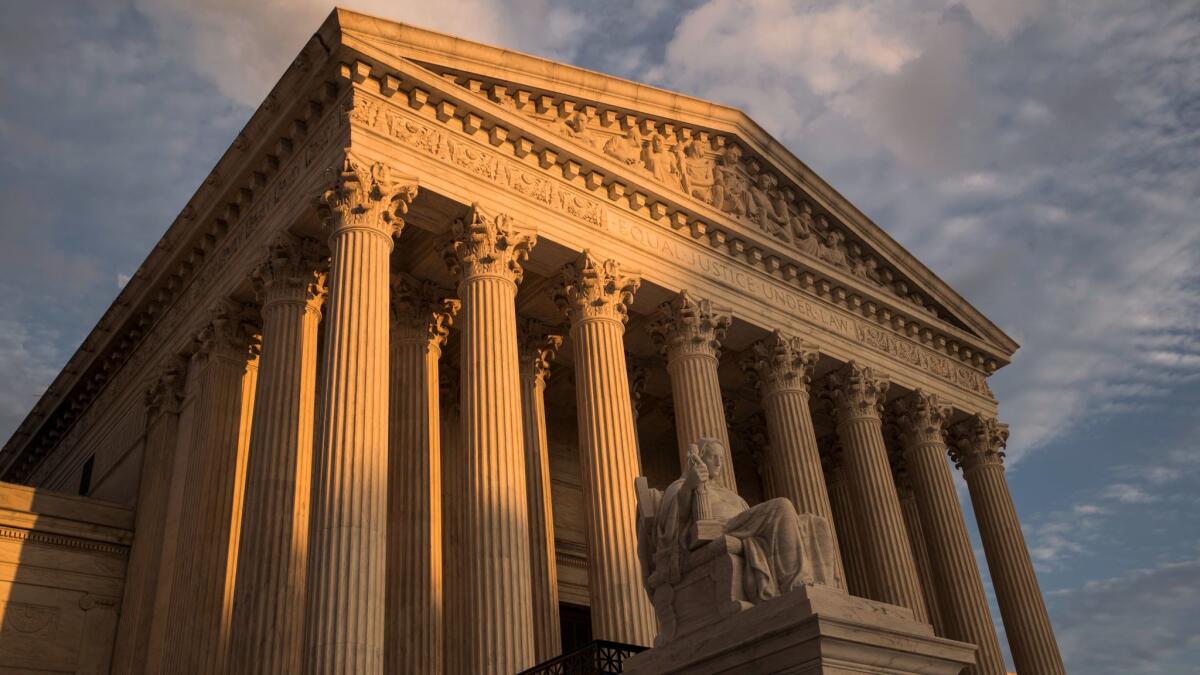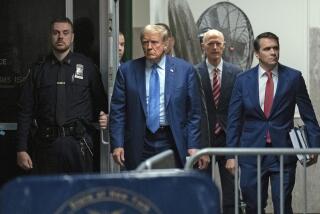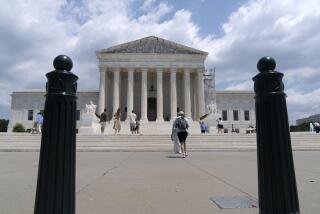Editorial: Itâs time for the Supreme Court to expand the definition of privacy

Five years ago, Chief Justice John G. Roberts Jr. told a university audience that the challenge for the Supreme Court for the next 50 years would be how to adapt old, established rules to new technology. On Wednesday the court will confront that challenge anew when lawyers for a Michigan man will argue that his 4th Amendment rights were violated when he was convicted of a series of armed robberies based partly on evidence from cellphone records obtained without a warrant.
If the court is serious about protecting privacy in the digital age, it will rule that the government indeed violated Timothy Carpenterâs constitutional rights. In doing so, it will have to overrule as outdated a nearly 40-year-old decision that allowed investigators to obtain personal information about suspects from third parties without a warrant. The court reasoned at the time that individuals have no reasonable expectation that the information collected by telephone companies and other service providers in the course of doing business will be kept private.
Carpenter came to the attention of the FBI when his number was among those obtained from a member of a robbery ring in the Detroit area. Agents retrieved about four monthsâ worth of Carpenterâs calling and location records from his wireless provider â not with a warrant based on a showing of probable cause that Carpenter had committed a crime, but with a federal magistrateâs order based on the lesser standard that the government had âreasonable groundsâ for believing that the records were ârelevant and material to an ongoing investigation.â
Katz vs. United States showed that the Supreme Court could adapt the Constitution to changes in technology. It must do so again in the Carpenter case.
Citing records indicating that Carpenter made calls near the robbery sites, a prosecutor told the jury that the defendant was âright where the first robbery was at the exact time of the robbery, the exact sector.â
The U.S. 6th Circuit Court of Appeals upheld Carpenterâs conviction, rejecting the argument that investigators needed a warrant to obtain his cellphone records. The appeals court cited a 1979 Supreme Court decision in which the court upheld the use by police, without a warrant, of a device that recorded the numbers dialed by a telephone customer. Because these numbers were voluntarily shared with a third party (the phone company), they werenât considered private.
Carpenterâs lawyers persuasively argue in their brief that the detailed and pervasive location data kept by cellphone companies are âfar more comprehensive and sensitiveâ than the phone company records of yore. âIt certainly cannot be said,â they add, âthat cellphone owners knowingly and intentionally disclose their minute-by-minute movements in historical perpetuity.â
As Carpenterâs lawyers point out, some states, including California, have legislated a warrant requirement for the acquisition of cellphone records. But that doesnât relieve the Supreme Court of the obligation to enforce a warrant requirement as part of the 4th Amendment.
Some justices have expressed an openness to that idea. In a concurring opinion in a 2012 case involving GPS surveillance, Justice Sonia Sotomayor wrote that people reveal a great deal about themselves as they carry out mundane tasks in the digital age: âPeople disclose the phone numbers that they dial or text to their cellular providers; the URLs that they visit and the email addresses with which they correspond to their Internet service providers; and the books, groceries and medications they purchase to online retailers.â
Given that reality, Sotomayor wrote, âit may be necessary to reconsider the premise that an individual has no reasonable expectation of privacy in information voluntarily disclosed to third parties.â
The full court should embrace that insight.
When the 4th Amendment was added to the Constitution in the 18th century, ensuring that the people were âsecure in their persons, houses, papers, and effects, against unreasonable searches and seizuresâ meant keeping the police from trespassing on citizensâ physical property.
But in 1967 the Supreme Court had to expand its understanding of privacy guaranteed by the 4th Amendment when it was confronted by a case â Katz vs. United States â in which the FBI attached an eavesdropping device to the outside of a telephone booth. Although there was no physical trespass, the court nevertheless found that the FBI violated the suspectâs 4th Amendment rights. Justice John Marshall Harlan wrote that the 4th Amendment protected against any act by the government that violated a âreasonable expectation of privacy.â
Katz vs. United States showed that the Supreme Court could adapt the Constitution to changes in technology. It must do so again in the Carpenter case.
Follow the Opinion section on Twitter @latimesopinionand Facebook
More to Read
A cure for the common opinion
Get thought-provoking perspectives with our weekly newsletter.
You may occasionally receive promotional content from the Los Angeles Times.










